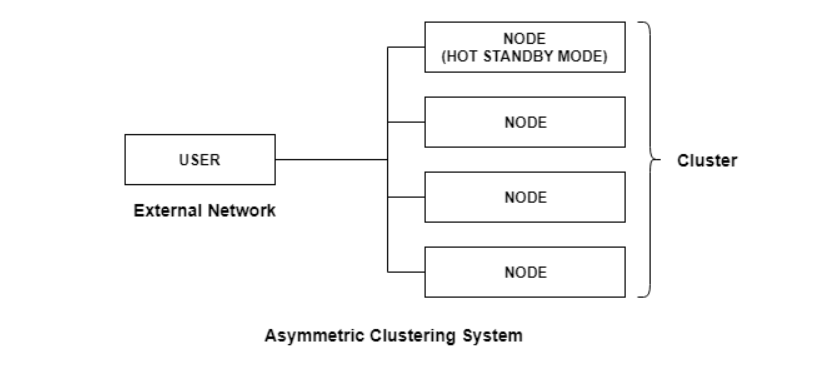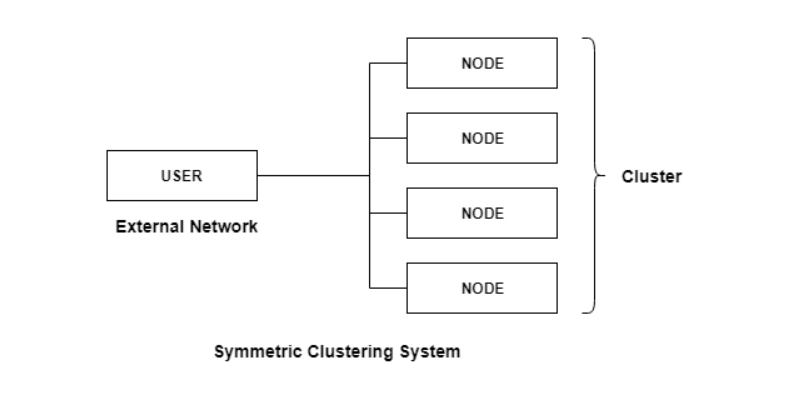
 Data Structure
Data Structure Networking
Networking RDBMS
RDBMS Operating System
Operating System Java
Java MS Excel
MS Excel iOS
iOS HTML
HTML CSS
CSS Android
Android Python
Python C Programming
C Programming C++
C++ C#
C# MongoDB
MongoDB MySQL
MySQL Javascript
Javascript PHP
PHP
- Selected Reading
- UPSC IAS Exams Notes
- Developer's Best Practices
- Questions and Answers
- Effective Resume Writing
- HR Interview Questions
- Computer Glossary
- Who is Who
Asymmetric and Symmetric Clustering System
Clustering systems are similar to parallel systems as they both have multiple CPUs. However a major difference is that clustered systems are created by two or more individual computer systems merged together. There are two types of Clustering systems i.e. asymmetric and symmetric clustering systems. Details about these are given as follows −
Asymmetric Clustering System
In this system, one of the nodes in the clustered system is in hot standby mode and all the others run the required applications. The hot standby mode is a failsafe in which a hot standby node is part of the system . The hot standby node continuously monitors the server and if it fails, the hot standby node takes its place.
A diagram that demonstrates asymmetric clustering system is −
How Asymmetric Clustering Works
The following steps demonstrate the working of the asymmetric clustering system −
- There is a master node in asymmetric clustering that directs all the slaves nodes to perform the tasks required. The requests are delegated by the master node.
- A distributed cache is used in asymmetric clustering to improve the performance of the system.
- Resources such as memory, peripheral devices etc. are divided between the nodes of the asymmetric clustering system at boot time.
Advantages of Asymmetric Clustering
The different advantages of asymmetric clustering are −
- Since many computer systems are connected together and the processors work in parallel, this reduces the cost of having separate peripheral devices and memory.
- The asymmetric clustering system has increased reliability as even if one nodes fails, the others can pick up the slack.
- All the nodes in the asymmetric clustering system have their own kernels and can operate on different operating systems.
- All the processors in the asymmetric clustering system are independent and only share memory for inter process communications.
Symmetric Clustering System
In symmetric clustering system two or more nodes all run applications as well as monitor each other. This is more efficient than asymmetric system as it uses all the hardware and doesn't keep a node merely as a hot standby
A diagram that demonstrates symmetric clustering system is −
Advantages of Symmetric Clustering System
The different advantages of symmetric clustering are −
- The symmetric clustering system is quite reliable. This is because if one nodes fails, the others can pick up the slack.This will not not result in the failure of the system but will lead to graceful degradation.
- Many computer systems are connected together and work in parallel in the symmetric clustering system. This reduces the overall cost as there is shared peripheral devices and memory.
- Symmetric clustering systems are quite scalable as it is easy to add a new node to the system. There is no need to take the entire cluster down to add a new node.



